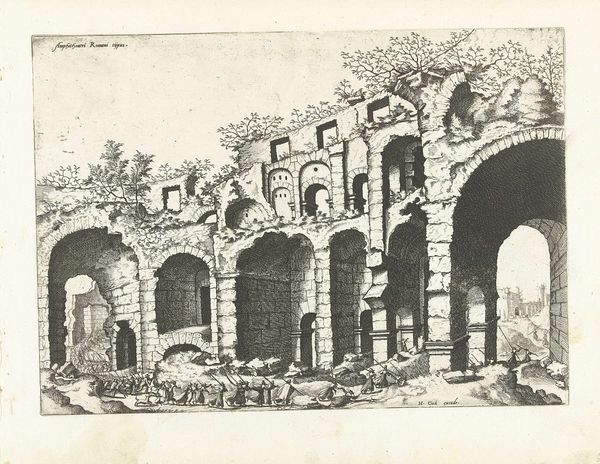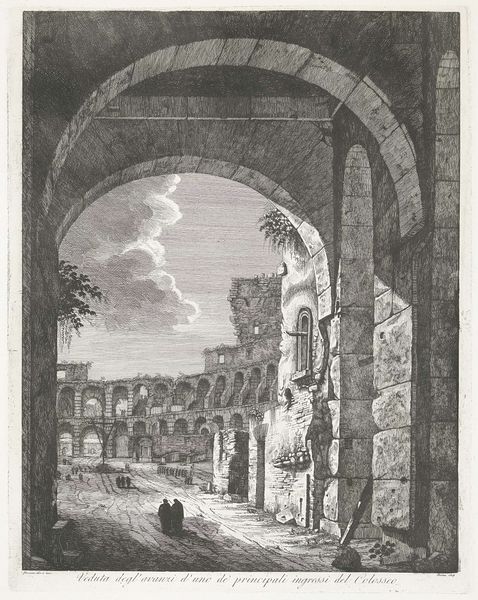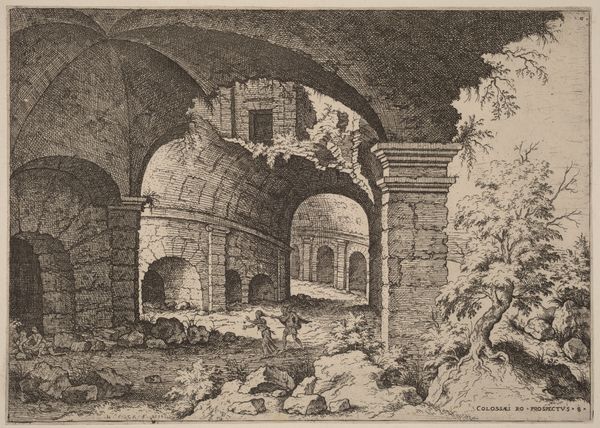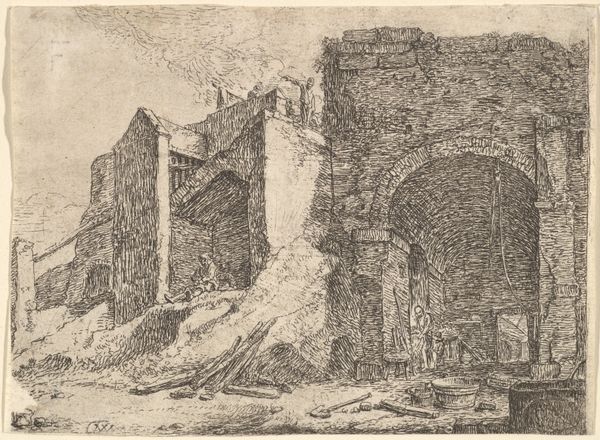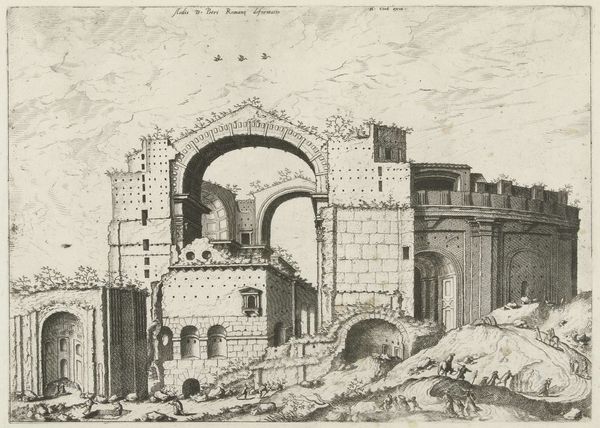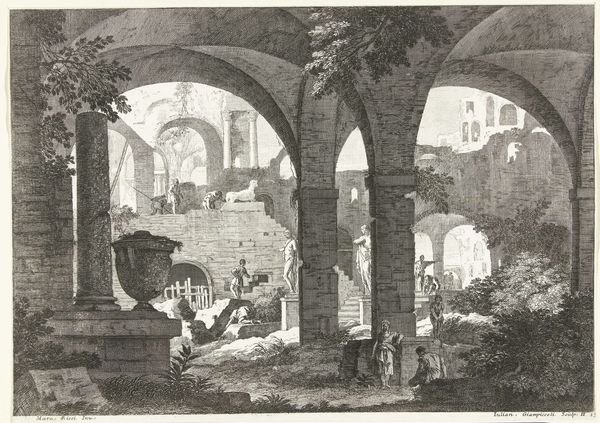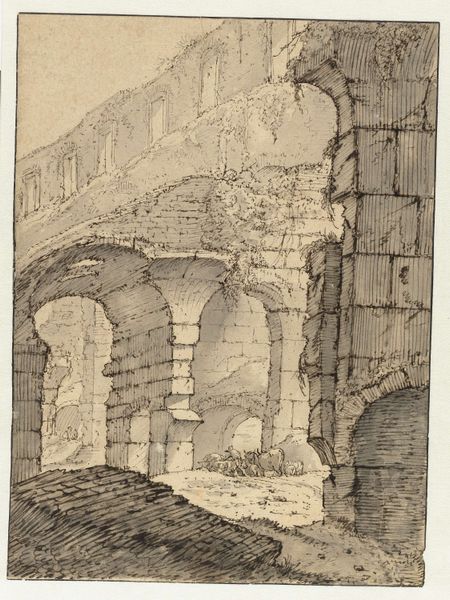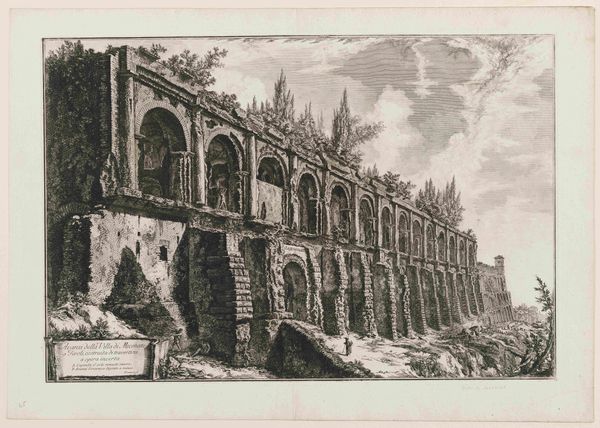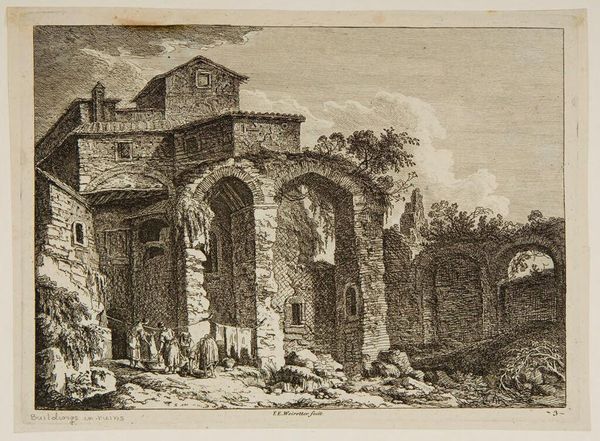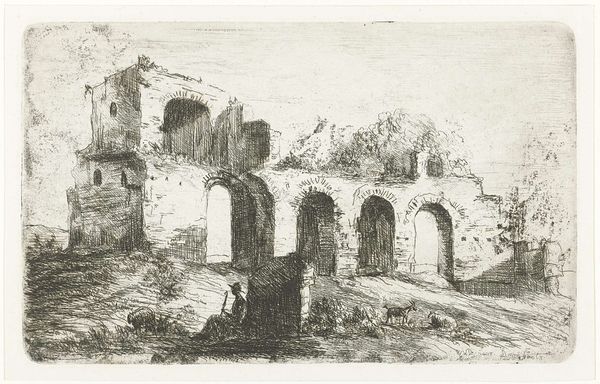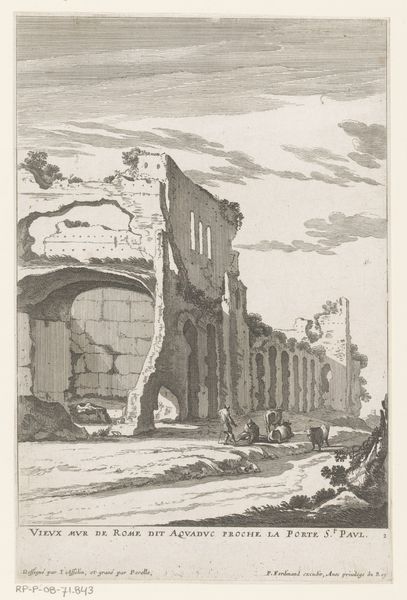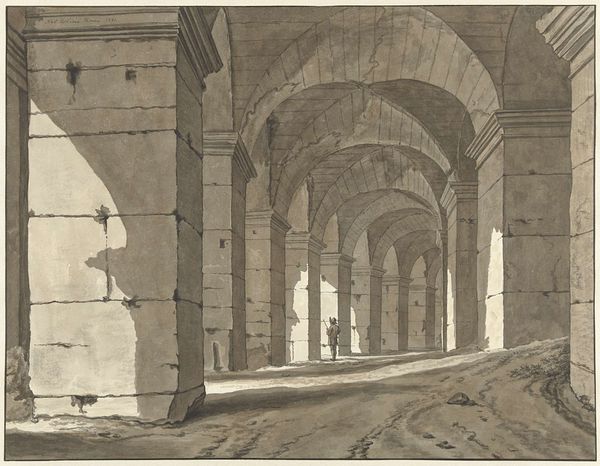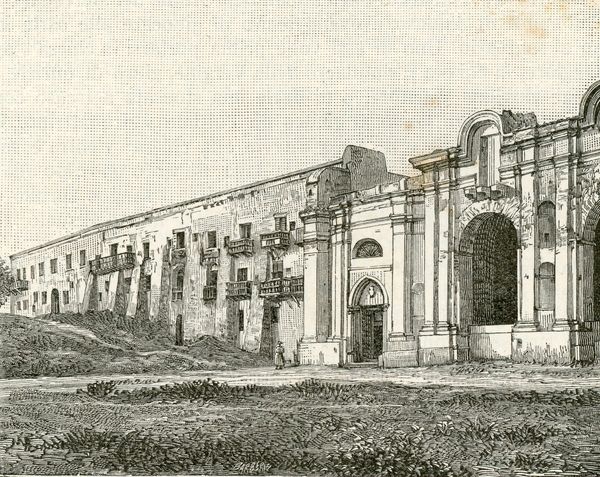
print, etching, engraving, architecture
#
neoclacissism
# print
#
etching
#
landscape
#
classical-realism
#
line
#
engraving
#
architecture
Dimensions: height 454 mm, width 610 mm
Copyright: Rijks Museum: Open Domain
Curator: Here we have Luigi Rossini's "De Tempel van Hercules Victor te Tivoli," an etching and engraving from 1824. It’s a powerful example of neoclassical interest in classical architecture. Editor: My immediate thought is the sheer labor it took to realize those massive blocks. You can almost feel the weight and effort in each etched line. The texture feels incredibly palpable. Curator: Exactly. Rossini was deeply engaged in documenting Roman antiquity. Consider the social context: this print circulated amongst wealthy Europeans on the Grand Tour, solidifying Rome's place as a cultural touchstone, while also bolstering Rossini's career within the art market. Editor: It speaks to how labor and industry contribute to empire, and the construction is deeply linked to political ambition. And I love how the lines aren’t precious; there's a roughness suggesting the very real human effort behind it. Curator: Precisely, but that roughness also aestheticizes decay and celebrates Roman endurance through visual representation. Editor: Yes, look closely—we have multiple processes layering, with the etching articulating the architecture's form and structure and the engraving adding tone. It’s a deliberate invocation of monumentality. This makes me curious about Rossini's own role as a maker, navigating artistic production under particular constraints. Curator: Rossini masterfully balances the grand scale with human elements, wouldn't you agree? The small figures at the base add a sense of perspective, making the temple all the more imposing while acknowledging its place within a broader social life. Editor: Absolutely, they highlight the relationship between architectural ambition and lived experience, between the permanence of stone and the ephemerality of daily life. Rossini's strategic use of etching and engraving allowed him to represent all those elements within a reproducible print. Curator: A remarkably concise statement of a specific historical and cultural moment, capturing the fascination with antiquity through the very accessible medium of print. Editor: Indeed. It’s a document deeply embedded within social practices, and the very means of production echo the labor, history, and enduring presence it represents.
Comments
No comments
Be the first to comment and join the conversation on the ultimate creative platform.
